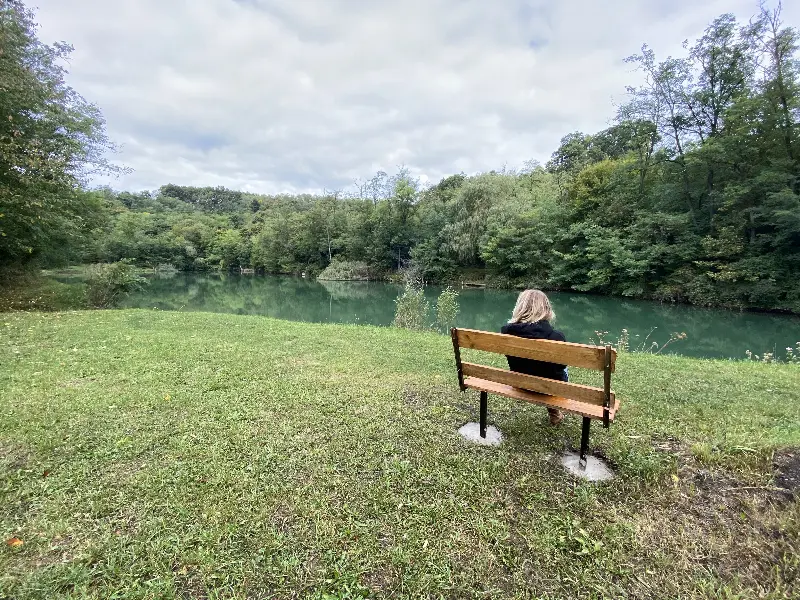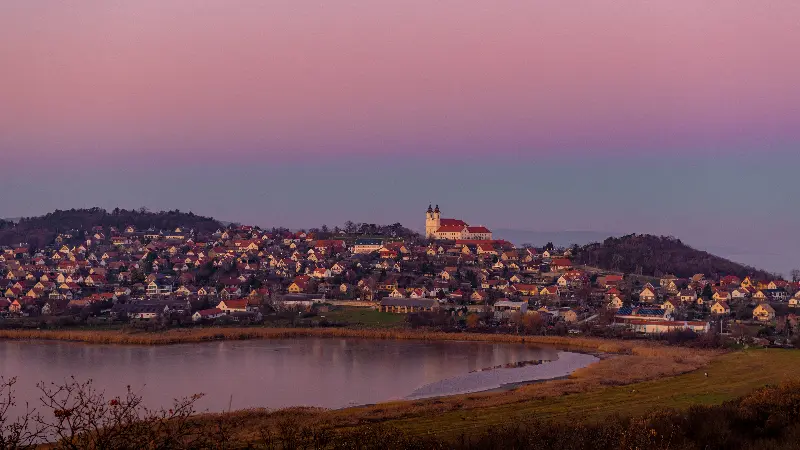
Helyszín címkék:
Sphere Lookout was built on the remains of a volcano and an earth fort in Balatonboglár
Németh Krisztina
Now Adventure Park, Foliage Promenade and one of the most visited lookout points of the country are located at the highest point of Balatonboglár, the 165-meter-high Castle Hill. The history of the destination, which has a significant tourist attraction, goes back several million years, which is worth knowing if you climb the steep cliffs.
Bold Hill was of volcanic origin, then it was the basis of an earth fort and a rampart system
Almost a hundred years ago, only an empty hill welcomed the visitors to the spa town. Its surface was covered with volcanic basalt tufa, one half of which still retains its traces. In the 1900s, it was taken over by enthusiastic patriots, who wanted to turn the settlement into a real bathing paradise. For this purpose, they tried to do everything to draw attention to the port on the southern shore.

The hill was taken by a landowner, who planted black pines
The hill with a bold surface began to take on its current form in the 1910s, when landowner Gyulai Gaál Gaston began to plant the area with black pines. Hardier specimens of more than 100-year-old pines still provide shade in hot weather. The sight was enriched by the fact that a wooden lookout tower was also erected, which stood here until the 1960s. This lookout tower was later replaced by the Sphere Lookout still visible today.
The "Hungarian Atomium" of the world exhibition of 1958 became a symbol

Originally, the Sphere Lookout was not designed as a lookout point. After the world exhibition of 1958, they did not make use of the gigantic, 15-meter-diameter structure anymore, so it was first transported to Balatonföldvár and then to Fonyód. Finally, it found a real home in Balatonboglár, in the early 1970s. It is interesting that it is still hotly debated whether it was assembled in 1972 or 1973.
The idea was that - according to the original plan - it would be covered with glass and a coffee-bar would be opened inside, but this did not work out. According to the leaders of the town, the structure would not have been able to withstand the siege of the natural forces hitting the hill, and according to the wagging tongues, the extra glass cover was not built because the glass plates disappeared during the transport.
The Sphere Lookout was lit up in 2006
It is due to two local residents, the architect László Zics and Zsigmond Harsányi, that the lookout point made up of triangles was given decorative lighting, so it also shines as a point of orientation in the Balaton night. The Sphere Lookout can also be seen well from the other side.

Since 2023, the Foliage Promenade and the paved road have surrounded the Sphere Lookout in the length of 600 meters
The surroundings of the Sphere Lookout have undergone several developments in recent years. The Adventure Park was opened in 2013, and 10 years later the 265-meter-long Foliage Promenade, which is transformed into a circular promenade by a several hundred-meter-long paved road. There is nothing similar to it on the north or south shore.
A Turkish janissary also jumped into the depths from here with his horse
Open-eyed tourists can also find a special monument on Várdomb. You can still see the stone from which, according to legend, a Turkish janissary threw himself into the abyss with his horse. According to the stories, he was hunted by the Hungarians and he chose the abyss instead of captivity. This "stone with hoofprints", from which he took off, can still be found next to the circular promenade.
Xántus János Lookout Tower
The symbol of the town was named after János Xántus. The ethnologist and zoologist from Somogy gained fame in America in the middle of the 1800s. Among others, he worked on the mapping of the Arkansas River, but he also travelled the California peninsula which was unknown then. He presented a significant botanical and zoological collection to Hungary, where his work was recognized, and he also became the first director of the Metropolitan Zoo and Botanical Garden.




